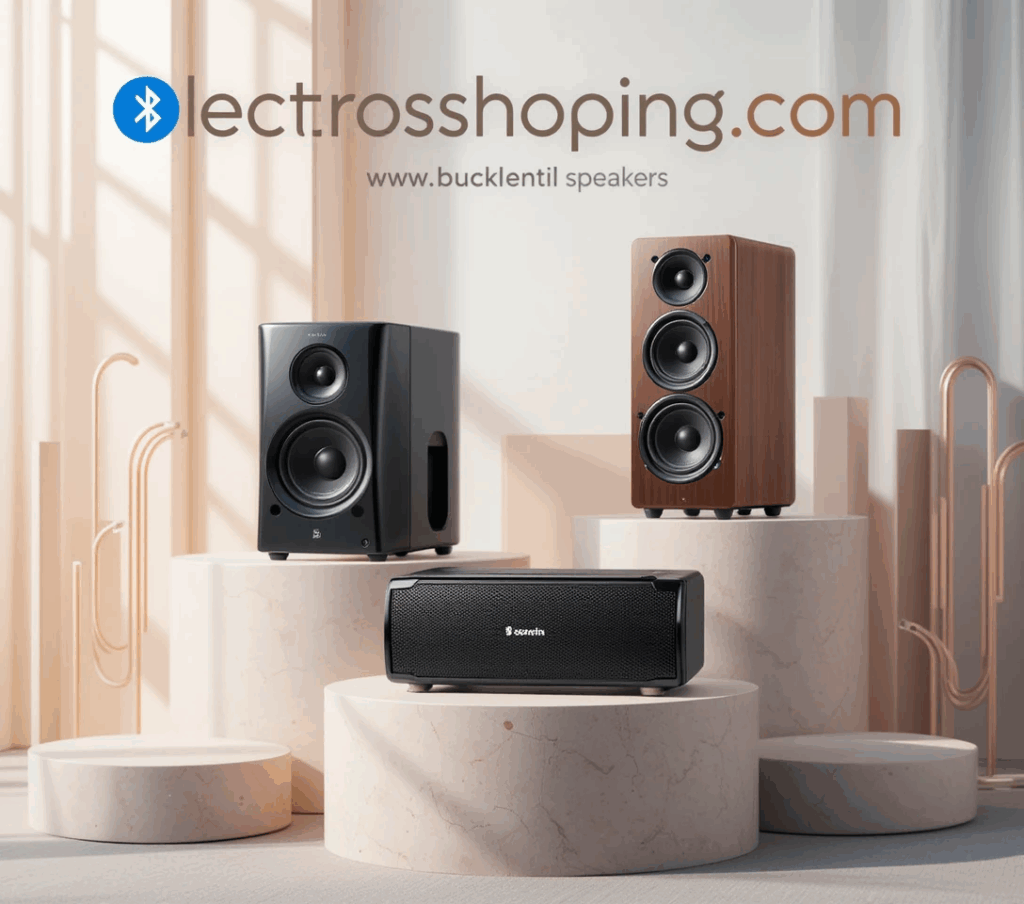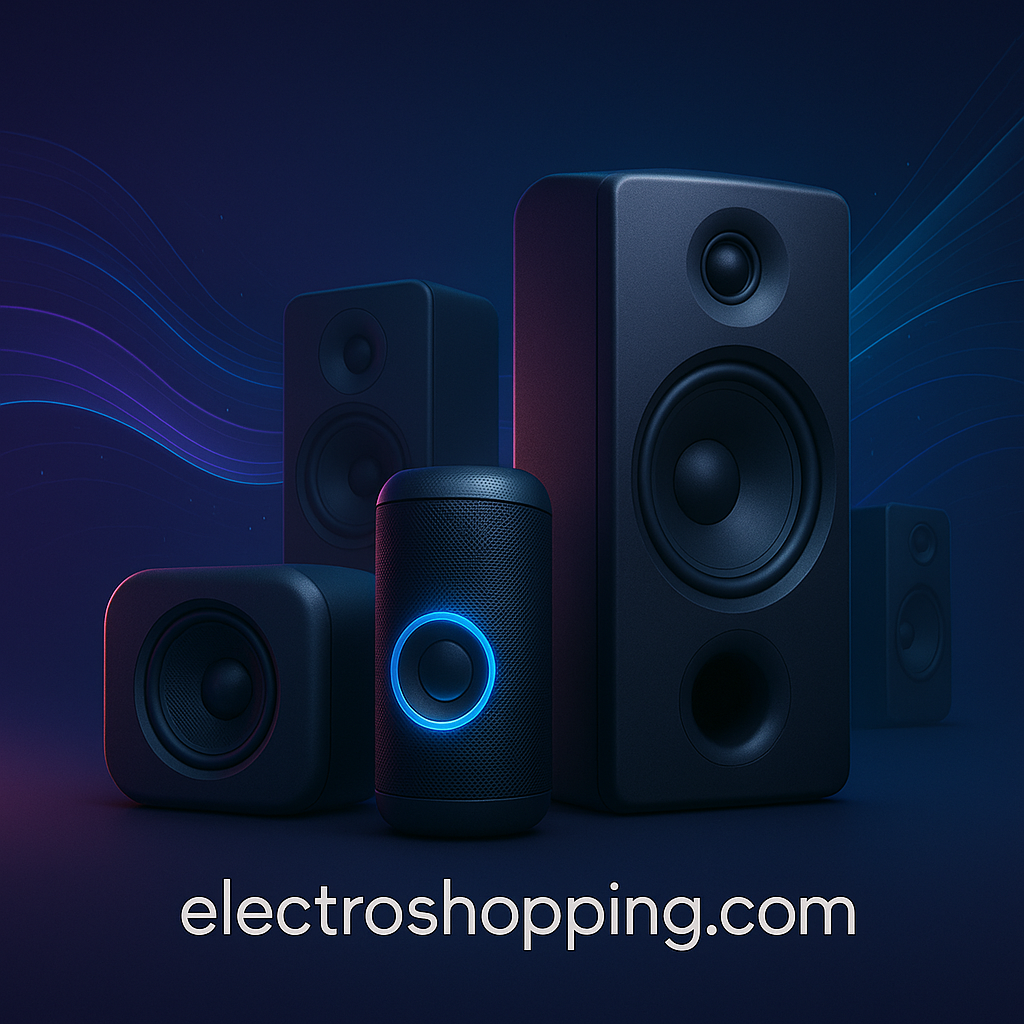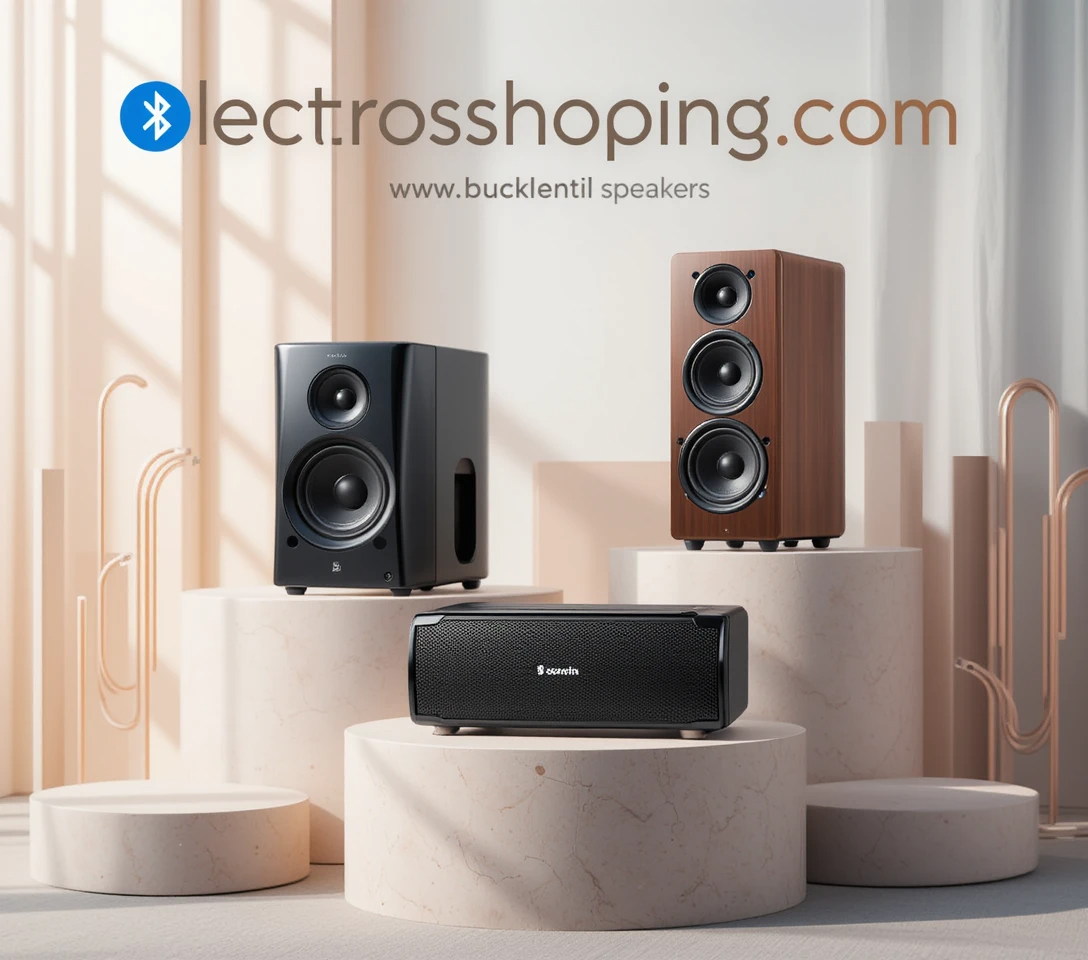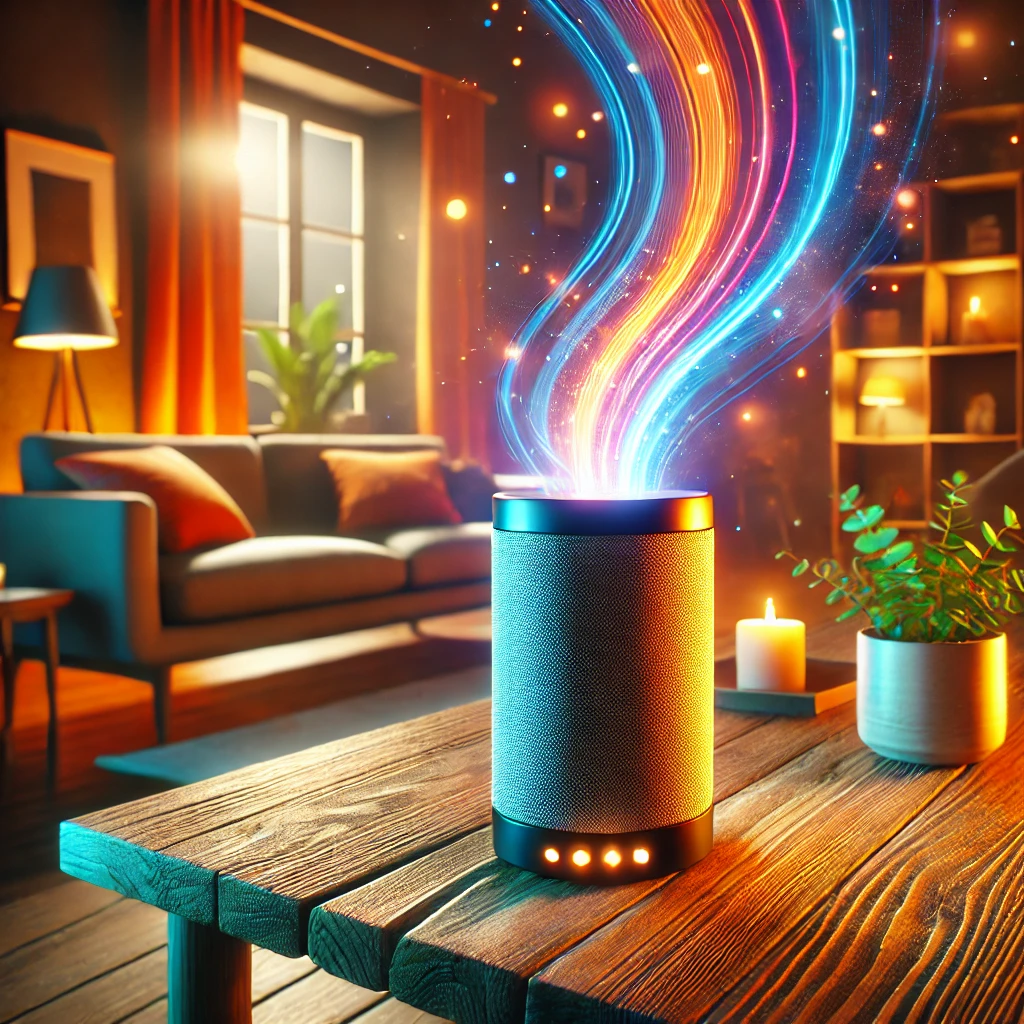Yes. In addition to standard Bluetooth pairing, modern speakers offer multiple wireless options – such as Wi-Fi streaming, Apple AirPlay/Google Chromecast support, NFC tap-to-pair, and built-in voice assistants – to enhance connectivity and audio quality. These features allow Bluetooth speakers to connect to more devices, support multi-room setups, and deliver higher fidelity sound with less latency than Bluetooth alone.

Table of Contents
- What are Additional Wireless Options for Bluetooth Speakers?
- Wi-Fi Connectivity & Multi-Room Streaming
- AirPlay, Chromecast, and Cloud Streaming Support
- NFC Tap-to-Pair for Easy Setup
- Voice Assistant & Smart Home Integration
- Advanced Bluetooth Codecs (aptX, LDAC)
- Frequently Asked Questions
What are Additional Wireless Options for Bluetooth Speakers?
Beyond Bluetooth, many speakers include Wi-Fi, NFC, AirPlay/Chromecast, and other connectivity features. These wireless options for Bluetooth speakers let you stream music over your home network, link multiple speakers for surround sound, and connect devices with a tapsonos.comtechradar.com. For example, high-end models often support Wi-Fi streaming, Spotify Connect, and aptX Bluetooth to ensure lossless playback from smartphones or PCstechradar.comsonos.com. This multi-protocol approach means speakers can play music in higher quality and with more flexibility than Bluetooth alone.

Wireless speaker connectivity example. In practice, this means a Bluetooth speaker might double as a Wi-Fi speaker or mesh speaker. For instance, some Sonos models use both Bluetooth and Wi-Fi, allowing them to stream lossless audio over your home network (Wi-Fi excels at this thanks to higher bandwidth)sonos.com. Others support dual-link Bluetooth or multi-pairing modes so you can connect two phones simultaneously. Altogether, these connectivity features make a speaker more versatile – letting you wirelessly play music from laptops, smart TVs, or cloud services in addition to your phone or tablet.
Wi-Fi Connectivity & Multi-Room Streaming
Many modern speakers include Wi-Fi support as a wireless option for Bluetooth speakers. Unlike Bluetooth’s one-to-one link, Wi-Fi connects through your home router, enabling multiple devices to stream at once. This allows true multi-room audio setups and higher-quality sound. For example, Sonos and other brands let you group speakers in different rooms – play the same song on all speakers or different songs on each sonos.com.

Wi-Fi streaming also supports popular protocols and services:
- Apple AirPlay 2: Stream directly from Apple devices or apps to any compatible speaker over Wi-Fi.
- Google Chromecast Audio: (Supported by many Android-friendly speakers) cast your music from apps or Chrome browser.
- DLNA/UPnP: Connect PCs and servers on your network to playback libraries on speakers.
- Cloud Services (Spotify, TIDAL): Many Wi-Fi speakers support Spotify Connect and similar features, letting the service stream music directly to the speaker.
These options ensure high-fidelity audio and reduce the risk of dropouts. As the Sonos guide notes, “Wi-Fi excels at streaming lossless audio thanks to its greater bandwidth, while Bluetooth is generally more portable”sonos.com. In other words, Wi-Fi is ideal for home listening where signal strength is strong.
Wireless streaming with Bluetooth speaker. Many high-end Bluetooth speakers (like those from Bose or JBL) now include Wi-Fi chips and apps to manage multiroom. For example, the Naim Mu-so speaker “comes with a full suite of connectivity options including aptX Bluetooth, Spotify Connect and AirPlay 2,” making it easy to play music “no matter what device” you usetechradar.com. In practice, you might tap a Spotify playlist on your phone and then use Spotify Connect to switch playback to a speaker network over Wi-Fi, keeping your phone free. Such Wi-Fi audio streaming and multi-room features are now common wireless options for Bluetooth speakers.

AirPlay, Chromecast, and Cloud Streaming Protocols
In addition to Wi-Fi, many speakers support specific streaming protocols that go beyond Bluetooth:
- Apple AirPlay / AirPlay 2: Allows Apple devices to stream audio over Wi-Fi. AirPlay 2 adds multi-room sync and multi-user control.
- Google Chromecast Built-in: Lets Android/Chrome devices and apps cast music directly to the speaker.
- Spotify Connect: Uses Wi-Fi to stream Spotify audio directly to speakers (phone just selects music, not sending data).
- DLNA & UPnP: Legacy home-network protocols for streaming from PCs, NAS, or media servers.
These protocols give users flexible options for high-quality streaming. For example, with AirPlay 2 you can ask Siri on your iPhone to play a song on your speaker, or with Chromecast you can tap the cast icon in YouTube or Google Play Music. Essentially, these wireless options for Bluetooth speakers allow seamless integration with popular services and devices. TechRadar highlights that premium speakers “support Spotify Connect and AirPlay 2, which means it’s easy to play in high quality, no matter what device you’re using” techradar.com.

Using these protocols typically requires the speaker to be on the same Wi-Fi network as your phone/tablet. But once set up, they offer very low-latency, lossless playback – ideal for movies and videos where audio sync matters.
NFC Tap-to-Pair for Easy Setup
NFC (Near-Field Communication) is another wireless option for Bluetooth speakers, but it isn’t a streaming protocol. Instead, NFC simplifies the pairing process. Many modern speakers have an NFC pad: tap your NFC-enabled phone to the speaker and the devices instantly pair over Bluetoothphiaton.com. No menus, no PIN codes needed.
This tap-to-pair feature is especially handy on the go. Imagine a guest arrives with a new device: they can share playlists by just tapping their phone on your speaker. As the Phiaton blog explains, “tap the devices together, and you’re done. A secure two-way Bluetooth connection between them is now established”phiaton.com. (Note that NFC range is just a few centimeters, so the devices must touch, but the pairing happens automatically.)
Not every device supports NFC pairing – Apple’s iPhones only allow NFC for Apple Pay, not Bluetooth pairing – but many Android phones do. Even if your phone doesn’t, speakers often fall back to traditional Bluetooth pairing mode. In summary, NFC is an optional wireless convenience feature that makes it easier to connect Bluetooth speakers without digging through settings.
Voice Assistant & Smart Home Integration
An increasingly popular connectivity feature is built-in voice assistant support. Many Bluetooth speakers now include Alexa, Google Assistant, or Siri. This effectively turns the speaker into a smart device that connects via Wi-Fi to the internet as well as via Bluetooth to your phone.
- Amazon Alexa & Echo Features: Speakers like the Sonos Move or Bose Portable Smart Speaker have Alexa built in. You can use voice commands to play music, control smart home devices, or switch playback sources.
- Google Assistant: Google-enabled speakers allow voice control of Google services and Chromecast.
- Apple Siri: Via AirPlay 2 or by linking a HomeKit environment, you can ask Siri to play music on compatible speakers.
This isn’t a new wireless standard per se, but it leverages Wi-Fi and cloud connectivity to add hands-free control. It’s especially useful for contextual playback: for example, saying “Play jazz in the living room” can route audio to specific speakers over Wi-Fi while using Bluetooth for another device elsewhere. Many speakers also use voice assistants to handle pairing and connectivity (e.g. “Alexa, connect to kitchen speaker”). If you already have a smart home ecosystem, choosing a speaker with Alexa or Google built-in can streamline streaming across your devices.
Advanced Bluetooth Codecs (aptX, LDAC, AAC)
While not separate wireless standards, higher-quality Bluetooth codecs are often listed among connectivity features. Codecs like aptX, aptX HD/LL, LDAC, and AAC allow Bluetooth speakers to receive audio at a higher bitrate with lower latency. In effect, they improve sound quality and synchronization, making Bluetooth streaming closer to true wireless fidelity.
For example, Qualcomm’s aptX HD and Sony’s LDAC can transmit near-CD quality audio, which ordinary SBC Bluetooth cannot. The Naim Mu-so and other high-end speakers include aptX Bluetooth as part of their feature settechradar.com. This means that even when using Bluetooth, the connection is optimized for clarity. For gamers or video watchers, low-latency codecs (like aptX LL) can ensure audio stays in sync with on-screen action.
Key Takeaways: When choosing a Bluetooth speaker, look at the wireless connectivity features beyond just Bluetooth version. Wi-Fi and multi-room protocols let you integrate the speaker into larger audio systems. NFC lets you pair devices in seconds. Voice assistants expand control and content options. And advanced codecs boost wireless audio quality. Together, these additional wireless options for Bluetooth speakers can make your listening experience more versatile and enjoyable.
Conclusion & Next Steps
Bluetooth speakers with extra wireless features can vastly improve your audio setup. Whether you need in-home multi-room streaming, easy tap-to-connect pairing, or high-fidelity wireless codecs, today’s speakers offer it. By choosing models with these connectivity features – Wi-Fi, AirPlay/Chromecast, NFC, and built-in voice assistants – you ensure that your speaker will work seamlessly with all your devices and services
What Are the Best Bluetooth Speakers with Wi-Fi & AirPlay in 2025? Read more —>





One thought on “Additional Wireless Options for Bluetooth Speakers: Best Connectivity Features Explained”